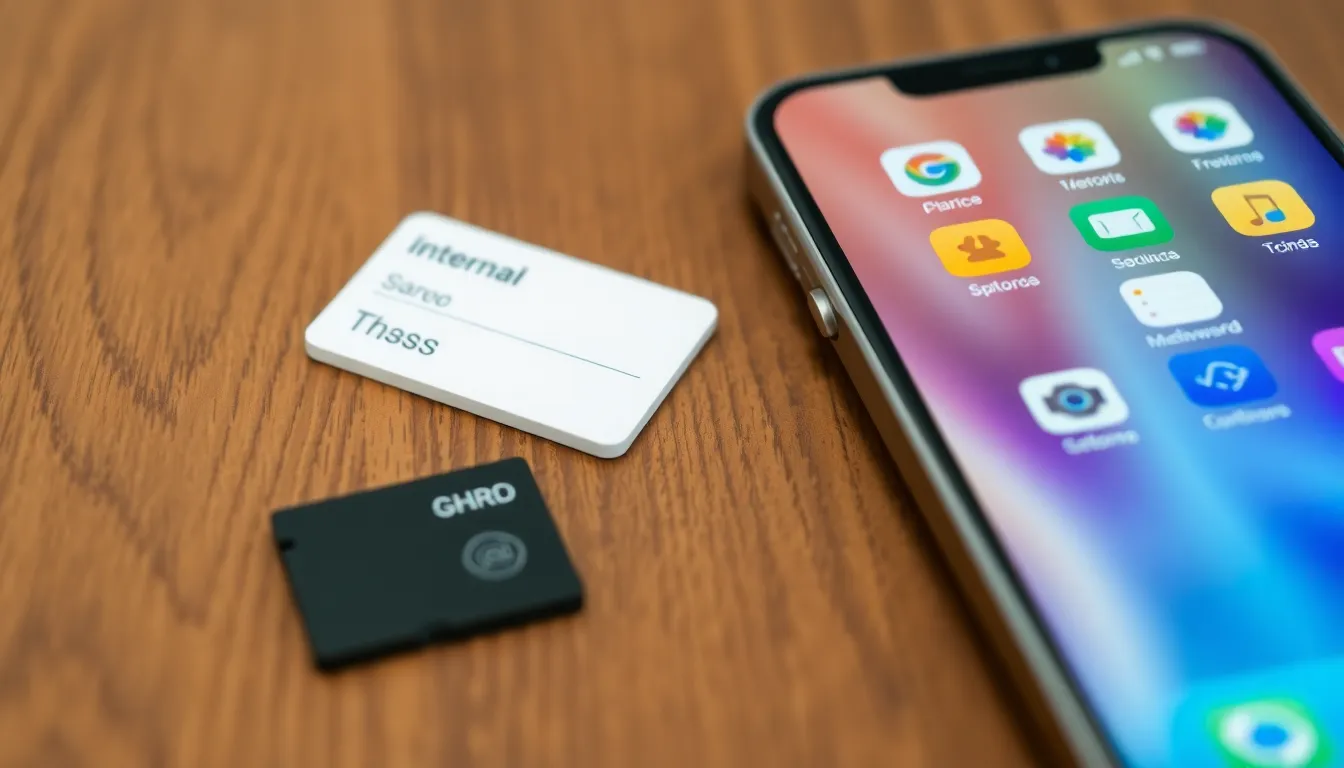In a world where selfies, memes, and endless cat videos reign supreme, running out of smartphone storage can feel like a digital apocalypse. It’s that moment when you realize your phone’s storage is as full as your inbox after a holiday sale. But fear not! There are smarter ways to manage that pesky storage issue without resorting to deleting your most prized GIF collection.
Table of Contents
ToggleOverview of Smartphone Storage Solutions
Smartphone storage solutions vary widely, addressing the needs of users experiencing space limitations. Cloud storage offers an effective means for offloading data. Services like Google Drive, Dropbox, and iCloud enable users to store photos and documents remotely without consuming local space.
External storage options, such as microSD cards, provide additional room for those preferring local data storage. Many smartphones support expandable storage, allowing users to insert cards ranging from 32GB to 1TB. This feature creates a flexible solution for those needing immediate access to files without relying on the internet.
File management apps serve users by efficiently organizing and cleaning up storage. Applications like Files by Google and CCleaner can identify large files and unnecessary duplicates, helping users make informed decisions about data management. Additionally, optimizing apps by clearing cache can free up substantial space.
Storage management settings come built into many smartphones. These settings allow users to monitor their usage and identify storage hogs directly from their devices. Users can often view which apps occupy the most space, enabling tailored management.
Compression techniques also assist in maximizing storage. Several applications condense image and video files, significantly reducing their sizes without sacrificing quality, allowing users to store more content with limited space.
If users adopt these strategies, they can effectively manage smartphone storage without sacrificing their beloved content like selfies and memes.
Types of Smartphone Storage Solutions

Smartphone storage solutions fall into two main categories: internal and external. Both options offer unique benefits.
Internal Storage
Internal storage refers to the built-in memory of a smartphone. This storage type is often measured in gigabytes (GB), with capacities typically ranging from 32 GB to 512 GB. Speed and performance benefit from internal storage since it allows for quick access to files and applications. Smartphones without microSD support may rely solely on internal storage, necessitating careful management. Users can optimize this space through deletion of unused apps or transferring files to cloud services. Monitoring tools help identify large files or duplicates, ensuring efficient use of available memory.
External Storage
External storage options expand a smartphone’s capacity. MicroSD cards serve as the most common external storage solution, offering capacities that can exceed 1 TB. Users benefit from easy installation and portability when using these cards. Many smartphones allow seamless integration of external storage, permitting quick access to files and media. Flash drives also provide additional alternatives for backup solutions. Employing encryption on external storage can enhance data security for sensitive files. Users should confirm compatibility with their devices to ensure optimal performance when selecting an external storage option.
Key Features to Consider
When choosing smartphone storage solutions, certain features greatly impact overall performance and user experience.
Speed and Performance
Speed affects how quickly files load and applications run. High-speed storage options, like UHS-I microSD cards or NVMe internal storage, provide fast read and write speeds that improve accessibility. Quick access to frequently used apps and files enhances user satisfaction. Smartphone users benefit from efficient performance, particularly during multitasking or gaming. Consideration of storage speed becomes essential for streaming high-resolution content, as faster options reduce buffering times.
Capacity Options
Capacity options significantly influence how much data can be saved. Internal storage usually ranges from 32 GB to 512 GB, offering varying levels of space depending on device models. Users can find microSD cards that extend storage beyond 1 TB, ideal for media-rich applications. Balancing storage capacity with actual usage becomes crucial. A larger capacity allows for more photos, videos, and apps, while limited storage can lead to frequent management of files. Knowing the capacities available helps users choose a solution that fits their needs.
Popular Smartphone Storage Solutions
Smartphone users often rely on various storage solutions to optimize their experience and manage data effectively. Two popular options are cloud storage services and microSD cards.
Cloud Storage Services
Cloud storage services such as Google Drive, Dropbox, and iCloud help users store files remotely. Users can access their data from multiple devices with an internet connection. These services typically offer generous free tiers, with paid plans available for additional storage needs. Sharing files with others becomes seamless through cloud platforms. Security measures often include encryption, making sensitive data safer. By selecting cloud storage, users mitigate the risk of losing data due to device failure.
MicroSD Cards
MicroSD cards provide an external storage option suited for smartphones lacking expandable storage. Users can find these cards in various capacities, often exceeding 1 TB. Easy installation allows users to insert the card into their devices without technical expertise. Fast read and write speeds significantly improve file access and application performance. Regular backups are crucial to safeguard the stored data. Compatibility with the device is essential, so users must check their smartphone’s specifications. This option enables better file organization without the need to upgrade the entire device.
Managing smartphone storage doesn’t have to be a daunting task. By utilizing a combination of cloud services external storage options and effective file management apps users can keep their devices running smoothly. Regular backups and awareness of storage limits are essential for maintaining optimal performance.
With the right strategies in place users can enjoy their favorite content without the constant worry of running out of space. Embracing these solutions not only enhances the smartphone experience but also ensures that cherished memories and important files remain accessible and secure.



